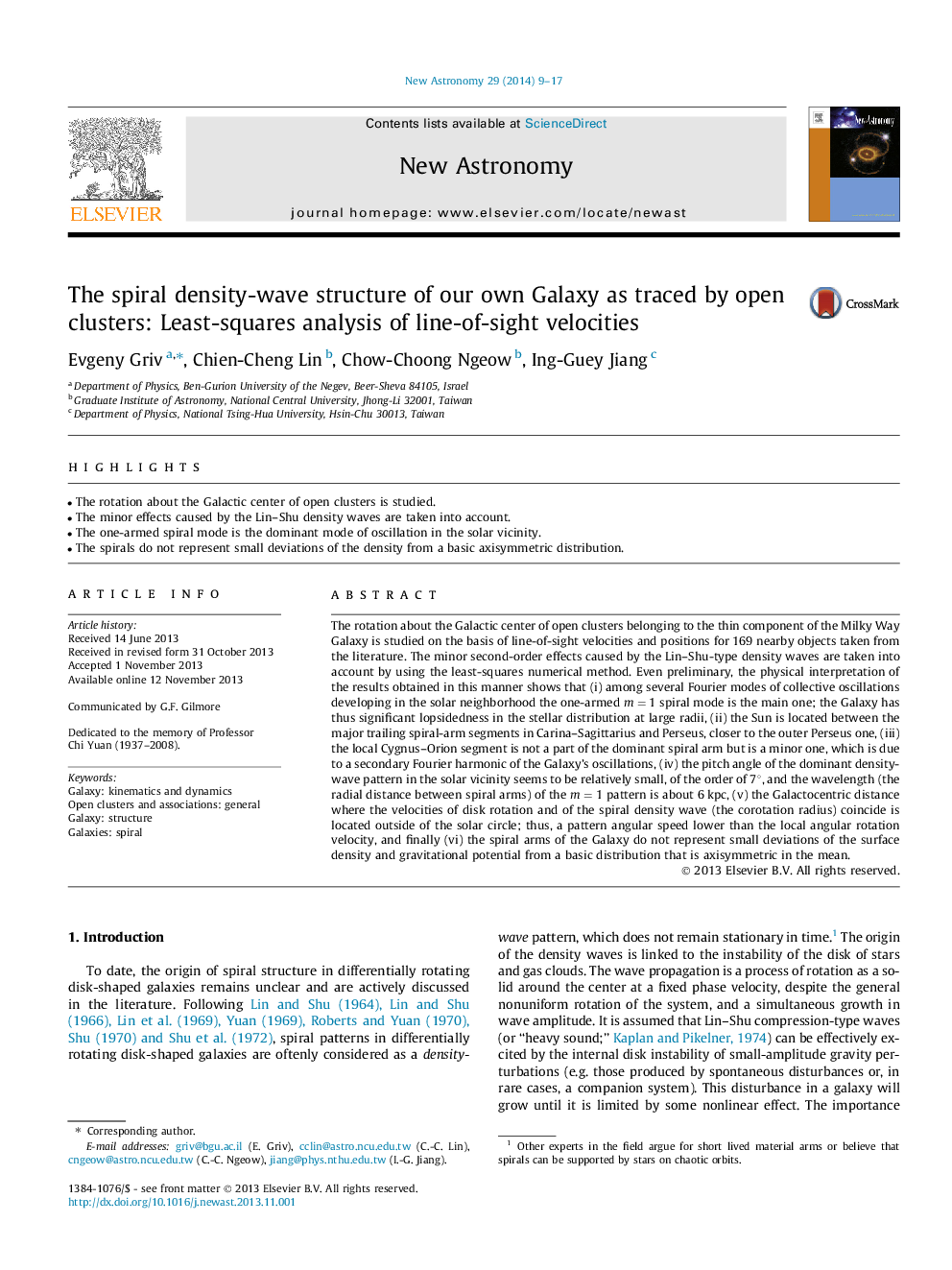| Article ID | Journal | Published Year | Pages | File Type |
|---|---|---|---|---|
| 1778992 | New Astronomy | 2014 | 9 Pages |
•The rotation about the Galactic center of open clusters is studied.•The minor effects caused by the Lin–Shu density waves are taken into account.•The one-armed spiral mode is the dominant mode of oscillation in the solar vicinity.•The spirals do not represent small deviations of the density from a basic axisymmetric distribution.
The rotation about the Galactic center of open clusters belonging to the thin component of the Milky Way Galaxy is studied on the basis of line-of-sight velocities and positions for 169 nearby objects taken from the literature. The minor second-order effects caused by the Lin–Shu-type density waves are taken into account by using the least-squares numerical method. Even preliminary, the physical interpretation of the results obtained in this manner shows that (i) among several Fourier modes of collective oscillations developing in the solar neighborhood the one-armed m=1m=1 spiral mode is the main one; the Galaxy has thus significant lopsidedness in the stellar distribution at large radii, (ii) the Sun is located between the major trailing spiral-arm segments in Carina–Sagittarius and Perseus, closer to the outer Perseus one, (iii) the local Cygnus–Orion segment is not a part of the dominant spiral arm but is a minor one, which is due to a secondary Fourier harmonic of the Galaxy’s oscillations, (iv) the pitch angle of the dominant density-wave pattern in the solar vicinity seems to be relatively small, of the order of 7°7°, and the wavelength (the radial distance between spiral arms) of the m=1m=1 pattern is about 6 kpc, (v) the Galactocentric distance where the velocities of disk rotation and of the spiral density wave (the corotation radius) coincide is located outside of the solar circle; thus, a pattern angular speed lower than the local angular rotation velocity, and finally (vi) the spiral arms of the Galaxy do not represent small deviations of the surface density and gravitational potential from a basic distribution that is axisymmetric in the mean.
